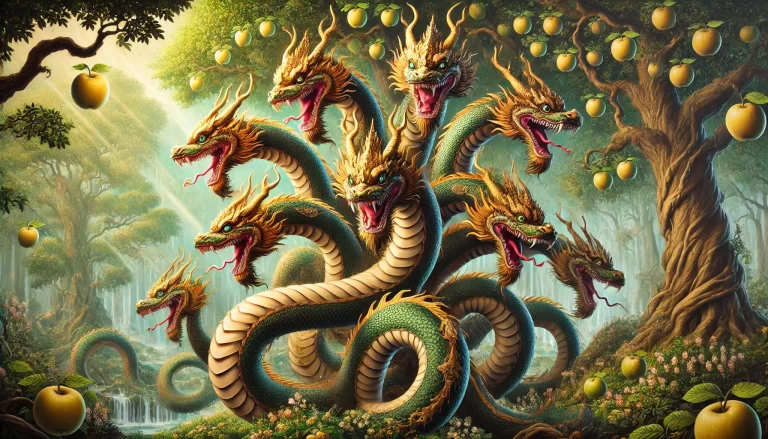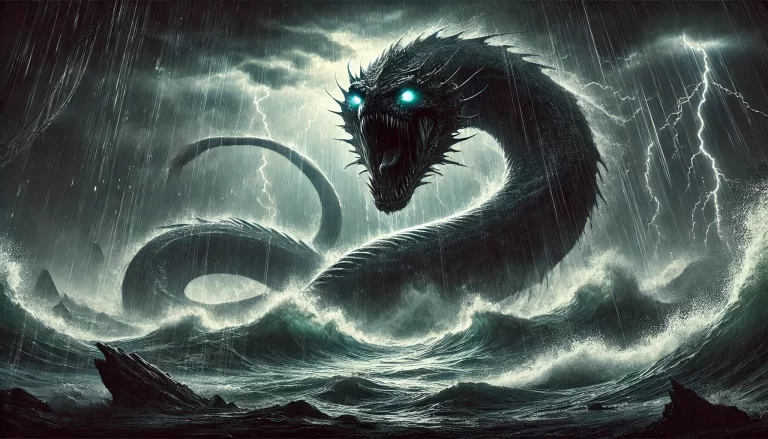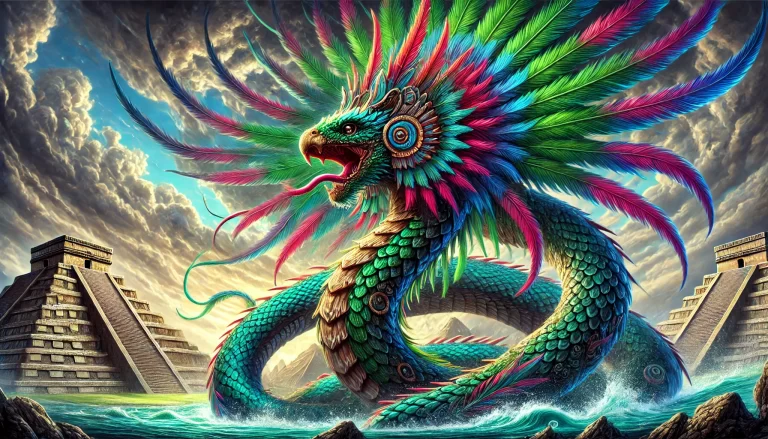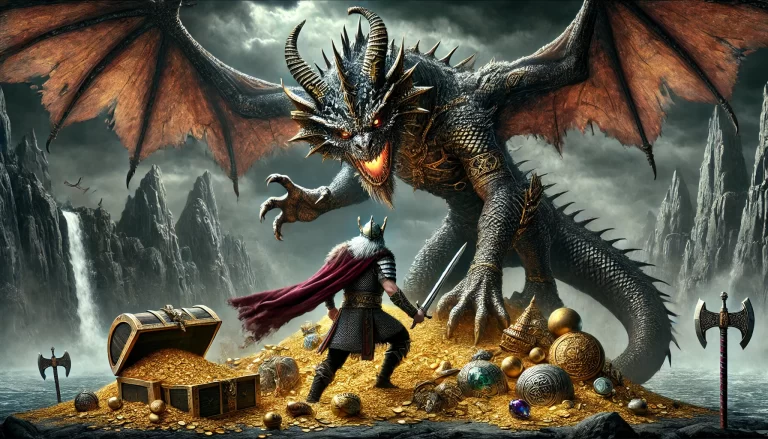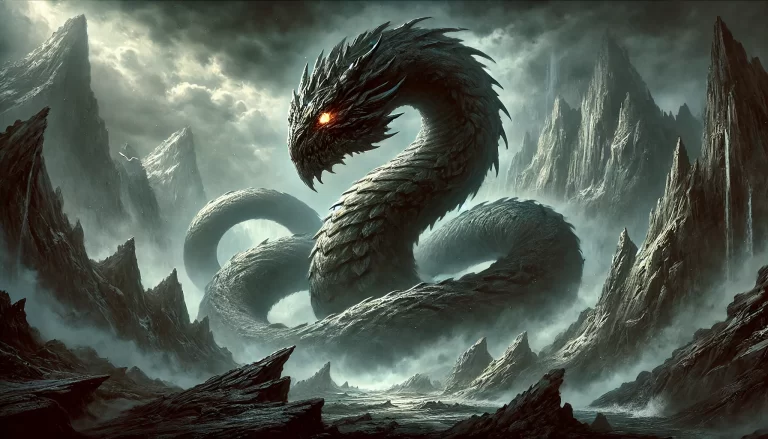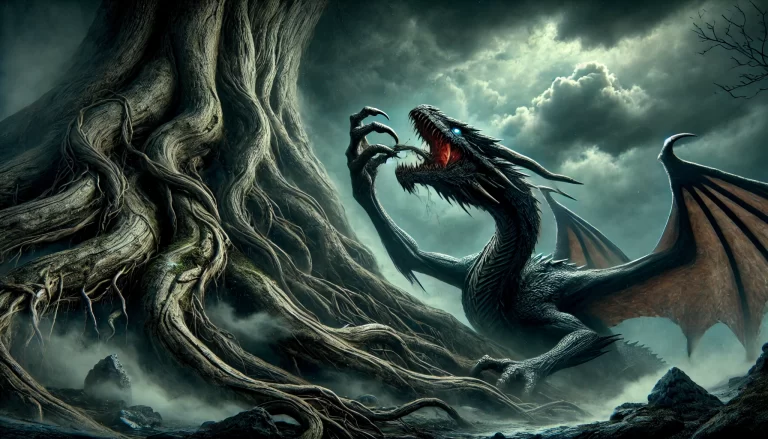The Legend of Yamata no Orochi: Japan’s Eight-Headed Serpent
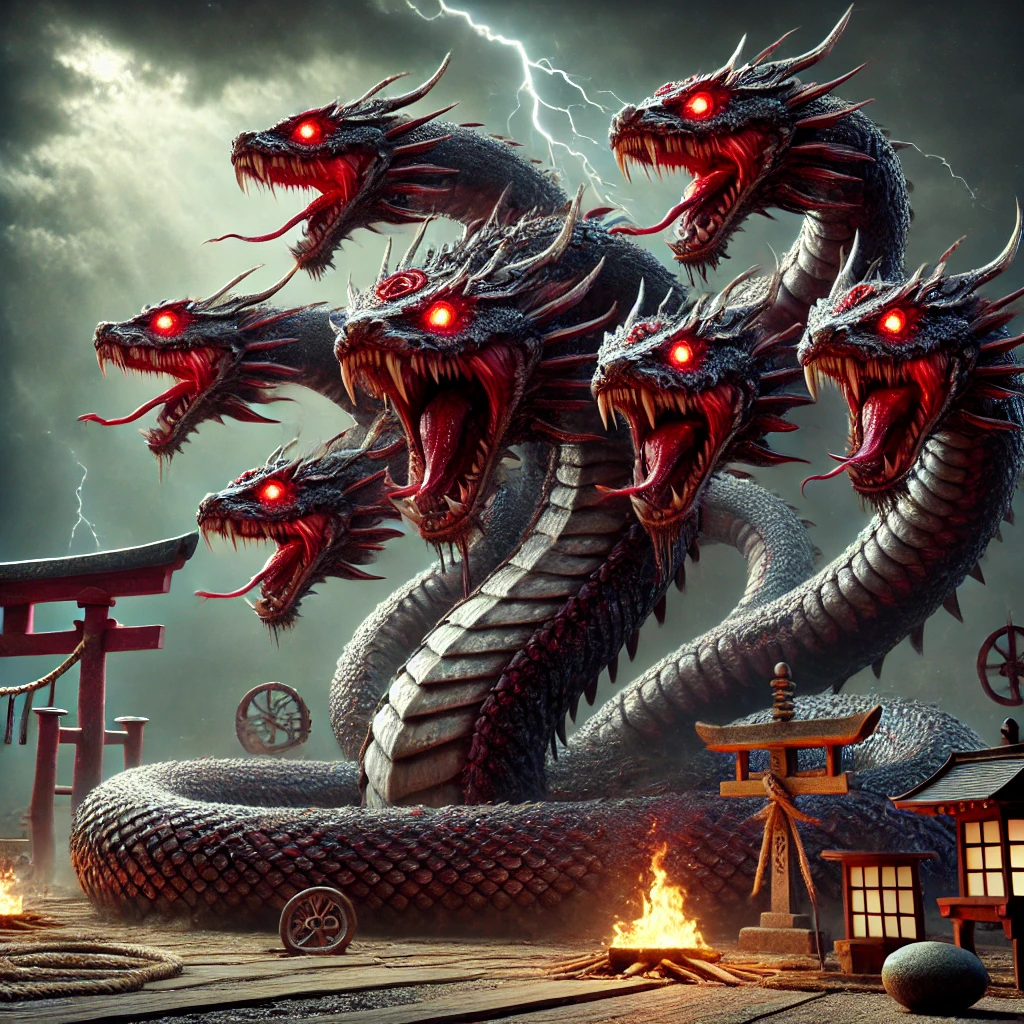
The Legend of Yamata no Orochi: Japan’s Eight-Headed Serpent
Japanese mythology is filled with captivating tales of gods, spirits, and mythical creatures. Among these legends, the story of Yamata no Orochi—a fearsome eight-headed, eight-tailed serpent—is one of the most iconic. This ancient myth, steeped in symbolism, reflects the deep connection between nature and divinity in Japanese culture. Here, we delve into the origins, significance, and lasting impact of Yamata no Orochi on Japanese mythology and culture.
The Origins of Yamata no Orochi
The tale of Yamata no Orochi is chronicled in Japan’s oldest texts, the Kojiki (“Records of Ancient Matters”) and the Nihon Shoki (“Chronicles of Japan”). These texts, written in the early 8th century, are fundamental to understanding the mythological origins of Japan.
According to the legend, Yamata no Orochi was a colossal serpent with eight heads and eight tails, so vast that its body stretched over eight hills and valleys. The serpent’s eyes were as red as blood, and it was said to be covered in moss and cypress trees. Each year, Orochi demanded the sacrifice of a maiden from a local village to satiate its hunger.
The god Susanoo-no-Mikoto, the storm deity and brother of the sun goddess Amaterasu, encountered the serpent when he was exiled from the heavens. Upon arriving in the province of Izumo, Susanoo found an elderly couple weeping by a river. They told him of their plight: they had already sacrificed seven of their daughters to the monstrous Orochi, and now only their youngest, Kushinada-hime, remained.
Moved by their sorrow and captivated by the beauty of Kushinada-hime, Susanoo devised a plan to defeat Orochi. He transformed Kushinada-hime into a comb and placed her in his hair to keep her safe. Then, he instructed the couple to prepare eight vats of sake (rice wine) and place them at eight points where the serpent would appear.
The Defeat of Yamata no Orochi
As the legend goes, Yamata no Orochi emerged from the river and approached the vats of sake. Drawn by the scent, each of its eight heads drank deeply from the wine. The serpent became intoxicated and fell into a deep slumber. Seizing the opportunity, Susanoo unsheathed his sword, the Ama-no-Habakiri, and slew the beast, cutting off each of its heads and tails.
When he reached the fourth tail, Susanoo’s blade struck something hard. Inside the tail, he discovered the legendary sword Kusanagi-no-Tsurugi (originally known as Ame-no-Murakumo-no-Tsurugi), which would later become one of the three Imperial Regalia of Japan. Susanoo presented the sword to his sister Amaterasu as a gesture of reconciliation, further intertwining the tale of Orochi with the divine lineage of Japanese emperors.
Symbolism and Cultural Significance
Yamata no Orochi embodies several layers of symbolism. The serpent’s eight heads and tails represent the destructive forces of nature, such as floods and storms, which were common in the Izumo region. Susanoo’s victory over Orochi symbolizes the triumph of civilization over chaos and the subjugation of nature by divine forces.
The tale also serves as a foundational myth for the Japanese Imperial family, linking their divine ancestry to the gods. The sword Kusanagi-no-Tsurugi, discovered within Orochi’s body, remains a powerful symbol of Japanese authority and is still enshrined at the Atsuta Shrine in Nagoya.
In popular culture, Yamata no Orochi has left a lasting legacy. The serpent appears in various forms across Japanese media, including films, video games, and anime. It often serves as a symbol of overwhelming power or an insurmountable challenge that heroes must overcome. The story continues to inspire artists and storytellers, reflecting the enduring appeal of this ancient myth.
Conclusion
The legend of Yamata no Orochi is a timeless tale that encapsulates the rich tapestry of Japanese mythology. Through its themes of heroism, sacrifice, and the struggle between order and chaos, it has resonated across centuries, influencing everything from religious practices to modern entertainment. As one of Japan’s most fearsome and iconic mythical creatures, Yamata no Orochi remains a potent symbol of the country’s cultural heritage.
In a world where mythology continues to shape our understanding of the past and present, the story of Yamata no Orochi reminds us of the timeless power of myth to convey universal truths and the enduring legacy of the gods and monsters of old.
Whether you’re a fan of Japanese mythology or just discovering it, the tale of Yamata no Orochi is a fascinating story that offers insights into the culture, values, and beliefs of ancient Japan.

